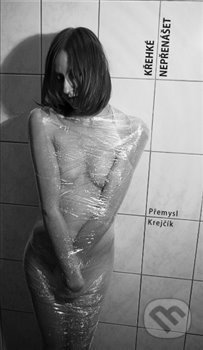
Fiat Fighters
Knihu koupíte v
1 e-shopu
od
1 000 Kč
Pokud se vám po kliknutí na tlačítko "Do obchodu" nezobrazí stránka knihy ve vybraném e-shopu, je třeba vypnout AdBlock ve vašem prohlížeči pro naši stránku.
Návod na vypnutí je například na adrese https://o.seznam.cz/jak-vypnout-adblock/#1.
Krátký popis
This is the second volume in Luigino Caliaro''s trilogy on the main
Italian fighter types to see service in the Second World War. This
book focuses on the fighter designs that emanated from the
Turin-based Fiat company. The author describes the long and
illustrious history of Fiat and introduces the early biplane
designs of the gifted engineer, Celestino Rosatelli, before dealing
with four of Fiat''s most successful and acclaimed
aircraft.Constructed of fabric-covered light alloy, the CR.32
biplane was one of the most outstanding fighters of the late 1930s.
Besides flying with the Regia Aeronautica in the Spanish Civil War,
it also saw service with the air forces of China, Austria, Hungary,
Paraguay and Venezuela. The CR.42 Falco, Rosatelli''s evolution of
the CR.32, became the last single-seat biplane fighter to be built
by the belligerent nations of the Second World War and it was also
exported to several other nations, including Belgium and Sweden, as
well as the Luftwaffe. The CR.42 saw service in the Mediterranean
and North Africa, the Balkans and Iraq, and there was a
nightfighter variant. In terms of monoplane fighters, the
radial-engined G.50 Freccia, designed by Giuseppe Gabrielli, became
the first Italian all-metal, single-seat fighter with a retractable
undercarriage. It saw wide deployment in Spain, the Balkans, the
Aegean and North Africa, while machines also went to Finland and
Croatia. The G.55 Centauro, powered in its ultimate variant by the
RA.1050 R.C.58 Tifone liquid-cooled engine, which was a
license-built version of the German DB 605A-1, equipped both the
Regia Aeronautica and the Aviazione Nazionale Repubblicana
(ANR).Drawing on company documents and reports from military
archives, the book explores the design, development and operational
career of each type, as well as production, prototypes, technical
aspects and much else. The volume is illustrated throughout with
hundreds of rare and fascinating photographs.
Vývoj ceny
Aktuální Ø cena knihy Fiat Fighters je 1 000 Kč
Výběr knih vydavatele
Crecy Publishing
Zobrazit všechny knihy vydavatele
Crecy Publishing
Naše tipy
- Právě probíhající akce a slevy na knihy
-
Knihydobrovsky.cz | do 12.12.2025
-
Knihydobrovsky.cz | do 17.12.2025
-
Knihydobrovsky.cz | do 24.12.2025
-
Knihydobrovsky.cz | do 24.12.2025
-
Bookshop.cz | do 31.12.2025
- zobrazit všechny akce












